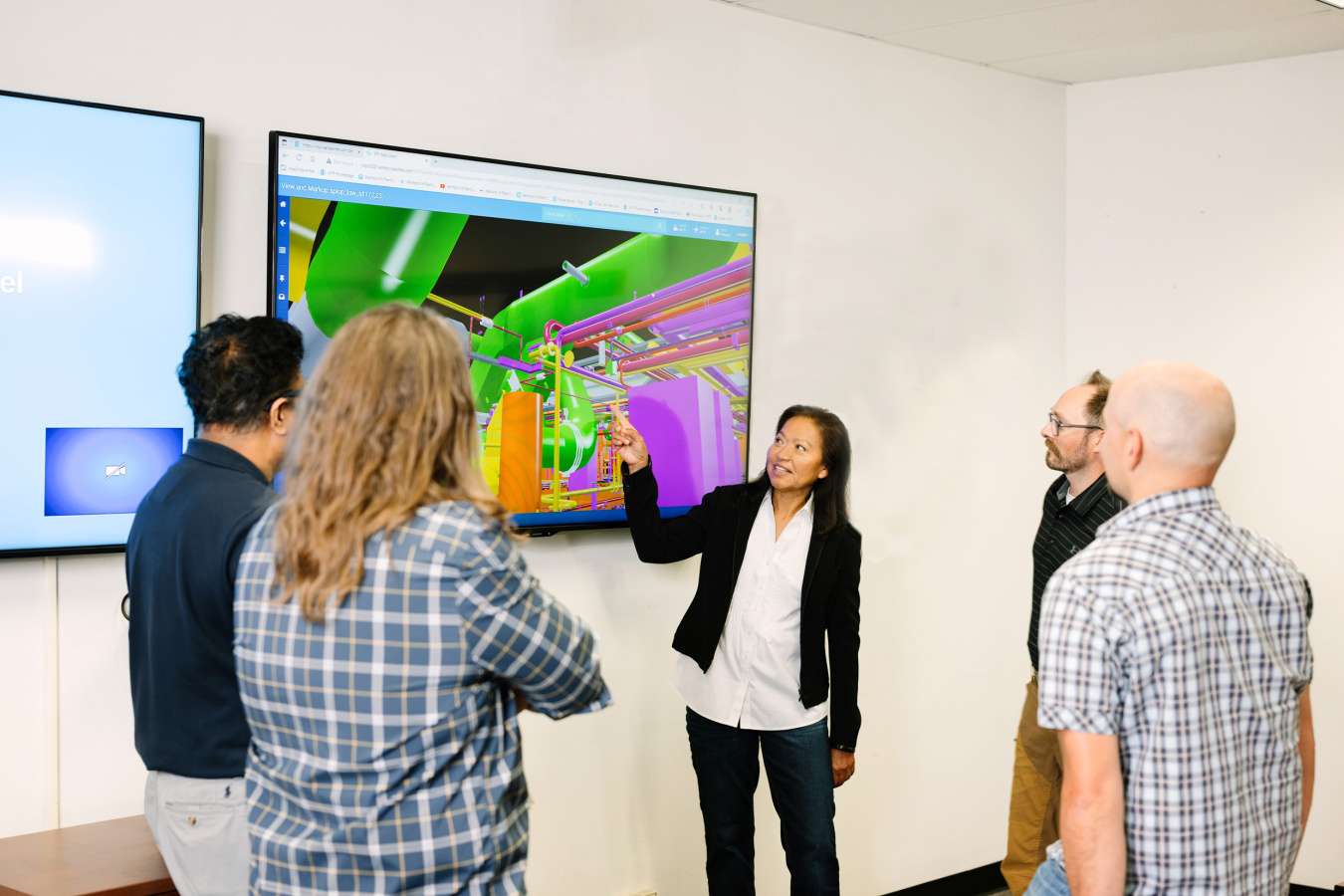The U.S. Department of Energy Office of Environmental Management’s (EM) Office of River Protection and contractor Bechtel National Inc. recently created a plan for completing the High-Level Waste (HLW) Facility at the Hanford Site’s Waste Treatment and Immobilization Plant.
Office of Environmental Management
May 21, 2024
A collaboration between the U.S. Department of Energy Office of Environmental Management’s Office of River Protection and Bechtel National Inc. set a foundation for requirements engineers will follow in continuing the design of the Hanford Site’s High-Level Waste Facility. Lourdes Legaspi, Engineering Automation supervisor, center, and her team are designing pipe and equipment components.
RICHLAND, Wash. —The U.S. Department of Energy Office of Environmental Management’s (EM) Office of River Protection and contractor Bechtel National Inc. recently created a plan for completing the High-Level Waste (HLW) Facility at the Hanford Site’s Waste Treatment and Immobilization Plant.
Together they laid out the strategy for completing the design and construction of the partially built facility that will immobilize in glass millions of gallons of radioactive and chemical waste from large, underground tanks at Hanford.
“We have a strong plan on what technical and programmatic requirements will drive the path to completing Hanford’s high-level waste treatment mission,” said Tom Teynor, Hanford HLW Facility project manager. “The collaboration is an example of how EM and its contractors can partner to produce positive outcomes.”
Felice Presti, Bechtel principal vice president and project manager for HLW, said, “Achieving alignment early reduces uncertainties, supports cost and schedule estimating and planning for future work, and it serves as a foundation for success going forward.”
The team incorporated lessons learned from the engineering, procurement, construction and commissioning of the plant’s Low-Activity Waste Facility and other facilities in EM’s Direct-Feed Low-Activity Waste Program.
A key aspect of the way ahead is completing design work before doing major construction work. The team also focused on determining criteria for accepting waste from Hanford's Tank Farms; using additional mock-ups, or simulated work environments with no radiological or chemical hazards; and involving experienced operators early in planning.
“These actions establish a strong foundation for making the High-Level Waste Facility Project a model for future projects,” said Teynor.
Like the Low-Activity Waste Facility, the HLW Facility will mix tank waste with glass-forming materials in two large melters operating at 2,100 degrees Fahrenheit. The mixture will be poured into stainless steel containers for interim safe storage prior to disposal.
-Contributor: Tyler Oates
To receive the latest news and updates about the Office of Environmental Management, submit your e-mail address.

